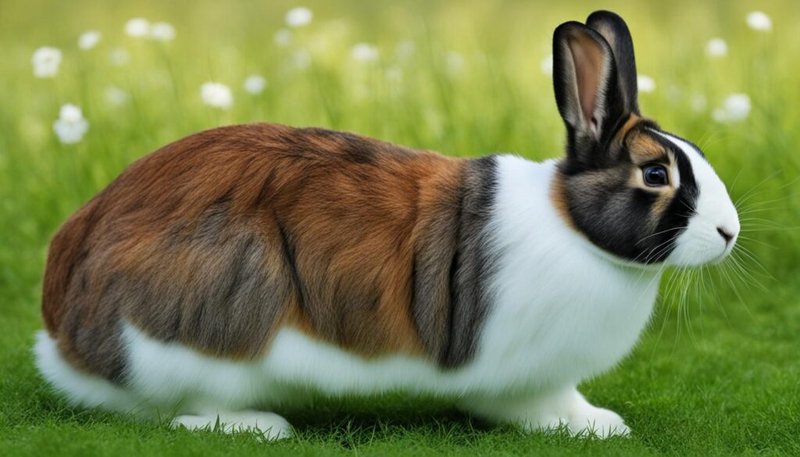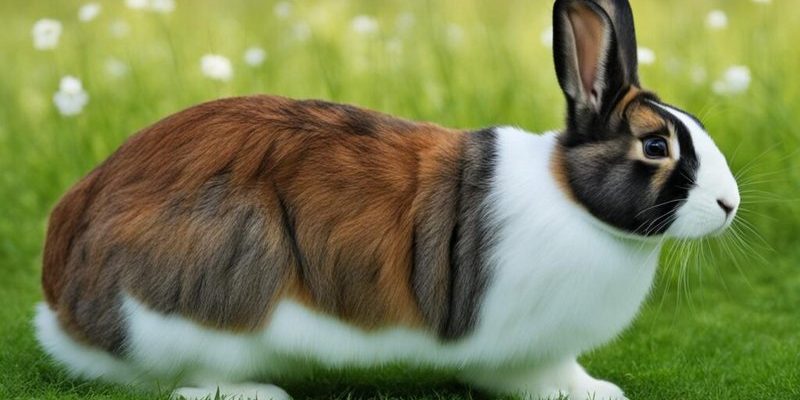
So, what should you know about the Dutch rabbit? Well, it’s not just about their cute appearance; understanding their size, temperament, and overall looks can help you appreciate them even more. Maybe you’re considering adopting one or just curious about this breed. Either way, you’re in for a treat!
Understanding the Dutch Rabbit’s Size
The Dutch rabbit is a small to medium-sized breed, usually weighing between 3.5 to 5.5 pounds. To put that in perspective, they’re about the size of a small cat. These rabbits typically grow to be about 12 to 14 inches long. Honestly, they’re just the right size to cuddle and hold in your lap without being overwhelming.
One fascinating aspect of their size is how it affects their personalities. While they’re compact, their size doesn’t dictate their playfulness. You might find your Dutch rabbit engaging in playful binkies around the room, showcasing their happiness. This breed is perfect for those with limited space, making them a great choice for apartment living.
Another thing to note is that their small size can sometimes make them vulnerable around larger pets. It’s essential to supervise interactions with dogs or other animals. If you’re introducing a Dutch rabbit to a multi-pet household, a little extra caution will go a long way.
Temperament: Friendly and Social
When it comes to temperament, the Dutch rabbit is known for being incredibly friendly and social. These rabbits tend to bond well with their humans, making them excellent companions. You might be wondering how they compare with other breeds. Well, Dutch rabbits are often more social than many other breeds, and they thrive on interaction.
Their laid-back nature means they’re generally good with kids and can adapt to different living situations. For example, if you have a bustling household, they’re likely to fit right in. You might find your Dutch rabbit happily sitting alongside your kids during playtime or hopping around during family gatherings.
Socialization is key to developing a well-adjusted Dutch rabbit. It’s a good idea to spend time with them daily, whether it’s through play, grooming, or just hanging out. This connection can enhance their affectionate nature and keep them feeling secure in their environment.
Dutch Rabbit Appearance: A Distinctive Look
Now, let’s talk about appearance. The Dutch rabbit is famous for its unique markings and charming features. They usually have a compact body structure with a short and broad head. One of their most distinctive features is their color pattern, which often includes a white face with two distinct color patches on the ears.
Common color combinations include black, blue, chocolate, gray, and even tortoiseshell. Each rabbit can have a blend of these colors, making every Dutch rabbit unique. Picture them as a living canvas of fluffy colors, hopping around your home.
Their fur is dense and soft, making it a delight to pet. Regular grooming is recommended to keep their coats healthy. You might want to invest in a good slicker brush, especially during shedding season, which usually occurs in spring and fall. Touching and grooming them not only keeps their coats looking great but also helps strengthen your bond.
Care Needs for Dutch Rabbits
Caring for a Dutch rabbit goes beyond just feeding them. These little fluff balls need a balanced diet, regular exercise, and proper habitat. Let’s dive into what that looks like.
A good diet for a Dutch rabbit includes high-quality hay, fresh vegetables, and a limited amount of pellets. Hay should make up most of their diet, as it’s essential for their digestive health. Leafy greens like romaine lettuce, cilantro, and parsley can be a great addition. Just remember to introduce new foods slowly to avoid digestive issues.
For exercise, Dutch rabbits love to hop and explore. Providing a safe, enclosed space for them to play is essential. You can create a fun environment by adding tunnels, chew toys, and safe rabbit-friendly furniture. The more they’re allowed to move around, the happier they’ll be!
Training Your Dutch Rabbit
Training your Dutch rabbit can be a rewarding experience. While they might not be as trainable as dogs, they can learn some basic commands and tricks. Positive reinforcement is key. Using treats to reward good behavior will encourage them to respond to your commands.
You might start with litter training. Most rabbits have a natural inclination to use a specific spot for their bathroom needs. Setting up a litter box filled with rabbit-safe litter can help. Just be patient and consistent, and soon enough, your Dutch rabbit will catch on.
Another fun trick is teaching them to come when called. You can do this by using their name and rewarding them with treats when they respond. Training not only stimulates their minds but also strengthens your bond with your furry friend.
Health Considerations
Just like any pet, Dutch rabbits have their own set of health considerations. Regular vet check-ups are crucial to ensuring your rabbit stays healthy. They can be prone to certain health issues, such as dental problems and obesity, so keeping an eye on their nutrition and teeth is important.
You should also be aware of common signs of distress or illness in rabbits. If your Dutch rabbit seems lethargic, has a change in appetite, or shows other unusual behaviors, it’s time to consult a vet. Early intervention can make a significant difference in their health.
Lastly, spaying or neutering your rabbit can also help prevent certain health problems and curb behavioral issues. It’s something to consider if you want to avoid unwanted litters and ensure a stable temperament in your pet.
Bringing Home a Dutch Rabbit: Adoption Tips
If you’re considering bringing a Dutch rabbit home, there are a few things to keep in mind. Adoption is a wonderful option, and many local shelters have rabbits looking for loving homes. Look for a reputable rescue or shelter in your area, and ask about their adoption process.
Before bringing your rabbit home, be sure to gather the necessary supplies. You’ll need a proper cage, food and water dishes, litter, and toys for enrichment. Having everything ready will help your new pet feel comfortable right away.
One last tip: patience is key. When bringing a Dutch rabbit into your home, give them time to adjust to their new environment. They may be a little shy at first, but with your love and attention, they’ll soon feel at home.
In summary, the Dutch rabbit is a wonderful choice for anyone looking for a friendly and charming companion. With their unique size, delightful temperament, and striking appearance, they can brighten up any household. Just remember to provide them with the care they need, and you’ll both be hopping with joy in no time!

